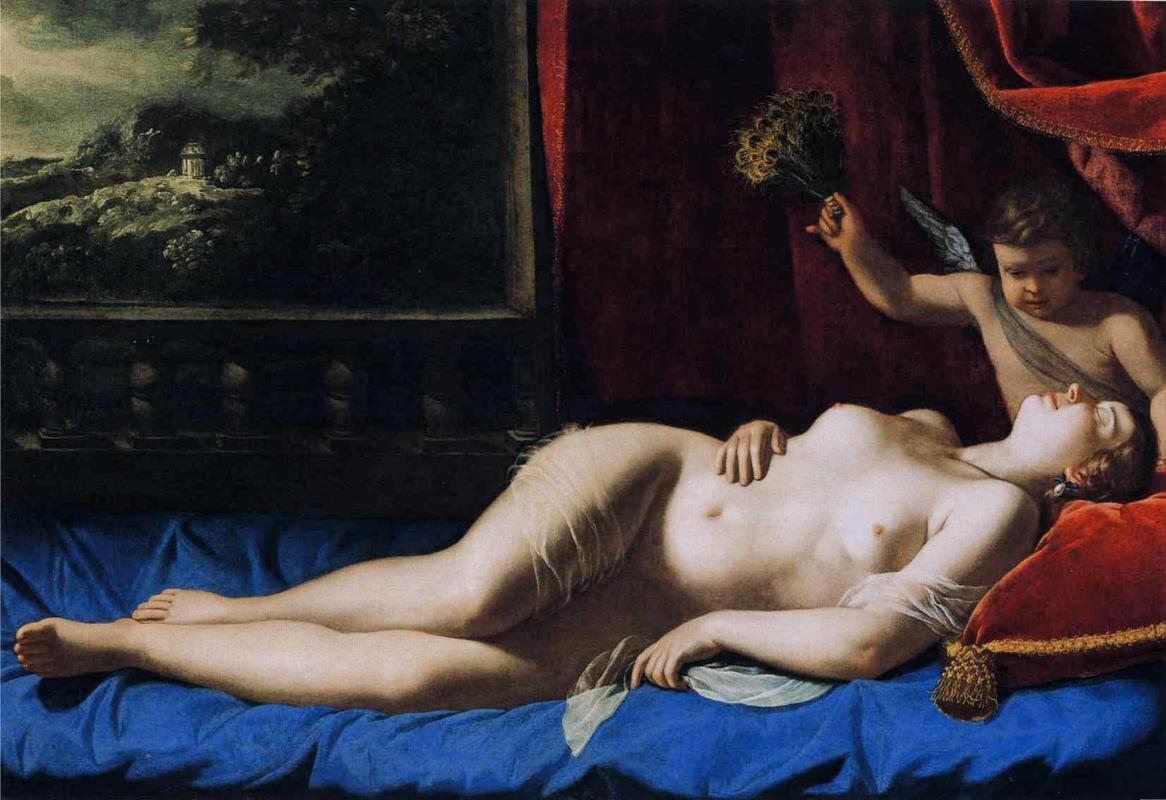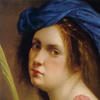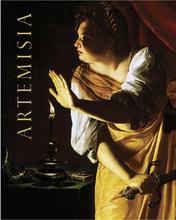More about Venus and Cupid
- All
- Info
- Shop

Contributor
Venus and Cupid breaks more than a couple stereotypes.
Although this may look like just another “pale naked goddess lies on a cushy bed in an oddly twisted position,” Artemisia Gentileschi was working outside of convention by painting a female nude whilst being female. Believe it or not, in 1600s Italy, painting the lady parts was still considered men’s work. No wonder Italian art ended up with sculpted boobs as perplexing as those in Michelangelo’s 1531 Night. But never mind the injustice of Renaissance nudes. What’s truly perplexing about this tableau is baby Cupid.
We’ve seen it all before. Titian’s Venus and Cupid with an Organist has an alarming dose of eroticism that keeps visitors to the Gemaldegalerie wondering just why infant Cupid is gazing into his mother’s eyes. Lotto’s Venus and Cupid features a joyful Cupid urinating onto an apparently unperturbed Venus. And we don’t even want to discuss Bronzino’s Venus, Cupid, Folly and Time. “Terrifying incestual mythology” doesn’t even begin to describe the oedipal shenanigans in that one. Compared to these scenes, Gentileschi’s Venus and Cupid is refreshingly devoid of creepy incestual vibes. Still, what possessed Cupid to wave a peacock fan on his sleeping mother? Is the goddess of love such a drama queen that she has her cherubic tyke fan her during her afternoon naps?
Don’t be fooled by Cupid’s innocent appearance. The pesky mini-god created his fair share of heartbreak. Legend has it Cupid used his arrows to make Apollo entranced by the naiad Daphne. Sadist that he was, Cupid then made Daphne disgusted by the lovestruck god of music. When pursued by Apollo, Daphne’s only recourse was to be turned into a laurel tree, which is pretty dismal for a happy ending. Cupid also reserved a few arrows just for Zeus, in case the lightning tyrant developed a crush. On Mount Olympus, the policy was “if she doesn’t like you, change her mind with your godly powers.” Consent is lamentably scarce in mythology.
Some gripe that Venus and Cupid is a mite too shabby for a Gentileschi. Could the tableau be the work of an anonymous imitator, or even Artemisia’s own old man? Despite the speculation, there’s no denying Venus’s resemblance to Gentileschi herself. Painting your own face onto the goddess of beauty and love? That’s an artist we can get behind.
Sources
- Costache, Irina D. The Art of Understanding Art: A Behind the Scenes Story. Malden, MA: Blackwell, 2012.
- “Daphne.” Wikipedia. July 23, 2017. Accessed August 5, 2017. https://en.wikipedia.org/wiki/Daphne.
- “Eros.” Theoi.com. 2017. Accessed August 5, 2017. http://www.theoi.com/Ouranios/Eros.html.
- Haber, John. “A Very Public Museum.” Haber Arts. 2010. Accessed August 5, 2017. http://www.haberarts.com/vmfa.htm.
- Schumm, Laura. “Who is Cupid?” History.com. February 12, 2014. Accessed August 5, 2017. http://www.history.com/news/ask-history/who-is-cupid.
- “Venus and Cupid (painting).” Wikipedia. July 1, 2017. Accessed August 5, 2017. https://en.wikipedia.org/wiki/Venus_and_Cupid_(painting).
Featured Content
Here is what Wikipedia says about Venus and Cupid (Gentileschi)
Venus and Cupid (Sleeping Venus) is a c. 1626 painting by Artemisia Gentileschi in the Virginia Museum of Fine Arts. Venus and Cupid is a depiction of a sleeping Venus, who reclines on a blue bed covering, with her head resting on a rich crimson and gold tasseled pillow. She wears nothing except a thin wisp of transparent linen around her thigh. Her son Cupid fans her with richly colored peacock feathers as she drifts to sleep. He is gazing at her with an adored, raptured expression. In the background, there is a window looking out onto a moonlight landscape where a temple to the goddess lies. Venus's face has full cheeks, heavy lids, a prominent nose, and small protruding chin—all features of Gentileschi's own face. The body movements are natural: Venus's hand rests lightly on her side, her legs are gently laid together. The work blends together realism and classicism through its iconography and the artist's style.
The painting was probably commissioned by an important and wealthy patron; Gentileschi painted the blue sheets on the canvas using two layers of lapis lazuli, an expensive material for artists to obtain. The depiction of a slumbering and vulnerable female, in contrast to her earlier works, is thought to indicate her willingness to adapt her style to the demands of patrons. It is possible that a second artist was commissioned to paint the landscape at the top left of the painting.
The painting was first documented in a private collection in Rome in the 1980s. It was then acquired by the Barbera Piasecka Foundation, Princeton, New Jersey. It was later acquired by the Adolph D. and Wilkins C. Williams Foundation who gifted it to the museum.
Check out the full Wikipedia article about Venus and Cupid (Gentileschi)















